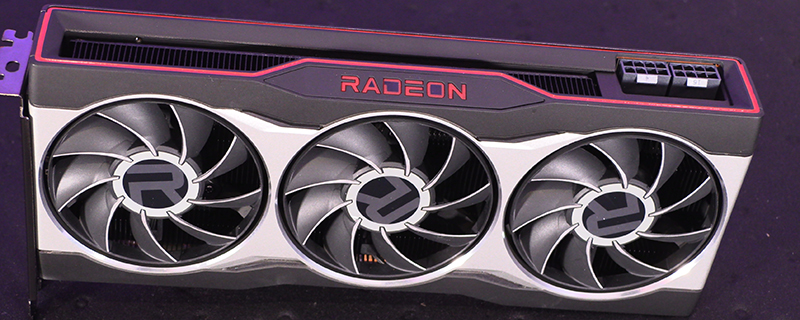AMD Radeon RX 6800 and RX 6800 XT Review
Conclusion
We’ve been patiently awaiting the rebirth of Radeon for some time. There have been a few false dawns along the way, with cards that always felt a generation or two behind what their competitors were offering. Given how much effort AMD had to put into their Zen architecture, it is no great stretch to imagine that maybe the GPU side of their R&D department had fewer resources to work with until very recently.
AMD is a company that has to fight on two fronts, facing Intel on the CPU side and Nvidia on the GPU side. With AMD’s limited R&D budget, fighting both silicon giants was a difficult challenge. However, AMD’s recent successes have thankfully given AMD the funding that they needed to revitalise both sides of the company. Add in the financing that AMD has gotten from Microsoft and Sony to create the silicon within the PlayStation 5 and Xbox Series X/S, and that’s enough to fuel a major comeback. Â
AMD’s last few generations of Ryzen CPUs and chipsets have proved such a roaring success, generating enough funding and enough engineering expertise to deliver a revolutionary new GPU architecture. The success of Zen has ensured the long term survivability of AMD, and the results of all the company’s recent efforts is their RDNA 2 GPU architecture. Through that architecture, we have today’s Radeon RX 6800 and RX 6800 XT.
If you’ve even glanced at our results rather than skipped straight here, you should be aware that the new Radeon cards are right up there, and for the first time in a while, it feels like the Santa Clara card is every bit the equal of the Sunnyvale offerings, with a tiny caveat. There is just so much to enjoy about it. For the first time in years, there is real competition within the high-end GPU market.Â
First impressions are excellent. We know AMD used a three fan design on the Radeon VII, but that always looked like a design from a bygone era, very square and simple. In contrast, the cooler on the RX 6800 pair is curved at the edges, has a simple but attractive aesthetic and very much looks like a premium product. Yes we’d prefer the heat to be pumped out of the bracket rather than spilling into the case, and maybe we’d like to see more obvious heat pipes to reassure us, but in terms of its ability to cool your GPU and give you plenty of headroom for overclocking. There is no denying that AMD’s reference heatsinks get the job done. AMD has to leave a little wiggle room for their partner vendors after all. Cool and quiet is a deadly combination and makes us happy.
The performance of AMD’s Radeon 6800 series cards are excellent. The regular RX 6800 sits above the RTX 3070 in most cases – where the GPU is priced – whilst the RX 6800 XT doesn’t quite equal the RTX 3080, but it’s hardly lagging behind either. If we’re talking ballpark performance both are a match for the relevant competitor in their price sector.
It might seem like a silly thing to say, but when was the last time AMD Radeon performance was so simple to talk about? No need to put in disclaimers about certain resolutions, or specific titles, or anything of the sort. They perform excellently, in everything, everywhere. Again with that tiny caveat. The Rage mode isn’t quite the game-changer we were hoping it would be, but if you run an AMD CPU, then you’d be mad not to click the button to turn it on for some free extra performance. Both the plain RX 6800 and RX 6800 XT overclock like lunatics, with the RX 6800 XT pushing past 2.5 GHz! Madness.
Speaking of which, that tiny caveat is this; This is AMD’s first go at putting hardware Ray Tracing on a card – Ray Accelerators they are here – and it reminds us of the performance we got from Nvidia’s first go, the Turing cards. What you end up with, thinking in Nvidia terms, is a hybrid of the raw performance of the latest Ampere cards, but the Turing cards performance if you enable Ray Tracing. However, whereas Nvidia has gone hard on doing the RT mainly with hardware, AMD is going for a blend of software and hardware which, given the inclusion of AMD GPUs in both the XBOX Series X and Playstation 5 pretty much guarantee that as game developers adapt and the drivers mature the performance will only increase. Particularly when the AMD selective rendering really gets going, as we already know how much of a difference the Nvidia version (DLSS) makes to performance. Even in their current state, the new RX cards are very impressive, and nothing about them indicates they won’t become more impressive as the software side of things matures.
From an engineering perspective, some of the changes that AMD has made with RDNA 2 are inspiring. With their Infinity Cache, AMD has found a way to deliver the same performance as their competing Nvidia products while using a smaller memory bus and slower GDDR6 memory. To counter the growing need for GPU bandwidth, AMD has thought outside of the box and has created an exciting new technology. While Nvidia focused on wider memory buses and faster, more expensive, GDDR6X memory, AMD decided to work around the problem with clever engineering, rather than brute force. In many ways, this cache innovation reminds us of Zen 2 and Zen 3, both of which use L3 cache improvements to increase system responsiveness and system bandwidth. We need clever solutions like this within the GPU market, and we are thrilled to see AMD delivering in this regard. Â
The world of gaming is changing, both within the PC and console landscapes. With RDNA 2, AMD plans to bend the market to its will, defining the DirectX 12 Ultimate feature set with RDNA 2 on Xbox Series X while also leveraging PlayStation 5 to ensure that developers optimise their software with Radeon hardware in mind. That said, we cannot know what the future holds, and as it stands, AMD’s RX 6800 and RX 6800 XT are highly competitive products. Â
All of which means that we finally, finally, have AMD graphics cards which match their competitor, just as the Ryzen CPUs easily match – and sometimes best – the Intel ones. The Ryzen comparison is pretty apt, as these RDNA 2 cards are like the first-gen Ryzen CPUs. Suddenly, AMD has been put back where they belong as real contenders for your hard-earned cash. Which one would we buy? Probably the plain RX 6800, but it’s a tight run thing, and your 4K needs will guide you.
Welcome back Radeon, we’ve missed you.Â
Discuss the AMD Radeon RX 6800 and RX 6800 XT in our OC3D Forums.




